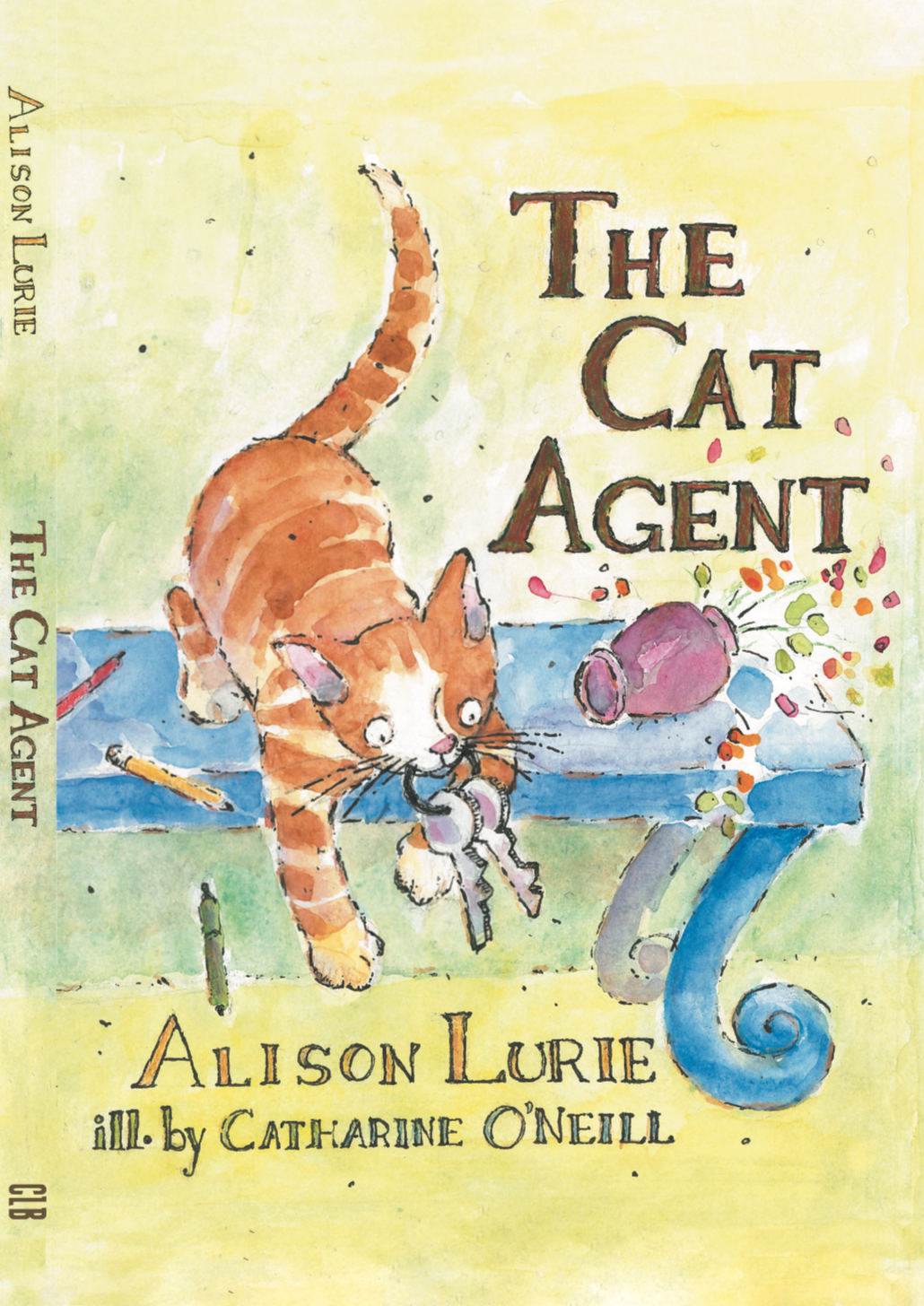Alison Lurie’s The Cat Agent
Below is the foreword, written by Cayuga Lake Books editor, Edward Hower, to Alison’s Lurie’s posthumous young adult novel, The Cat Agent.
*
My late wife, Alison Lurie, who lived to the age of 94, left behind a completed but unpublished manuscript of The Cat Agent, which she had worked on into her late 80s. It was her last work of fiction. She was such a meticulous writer that I had very little editing to do; her plotting was, as always, ingenious and beautifully crafted, her voice always witty and entertaining.
Alison’s agent showed the book to big New York publishers, but it wasn’t destined for today’s commercial marketplace; contemporary children’s and young adult books deal with 21st-century social issues and are written in different styles from the one you’ll see in this book. It’s a little old fashioned, in the best sense: an enthusiastic, confidential way of talking to young readers as if they were old friends.
Cayuga Lake Books, the small press I’ve been co-editing with friends for ten years, is just right for The Cat Agent. The novel has an intimate, small town feel to it.
You can tell from her writing how much Alison enjoyed seeing animals from young people’s points of view. The cats are, of course, quite a lot like children, in the way they privately know they are. Alison gave herself the freedom to create a small, supportive society much like a gang of kids who love solving mysteries and going on hunts for adventure.
The cats are loved and aided by sympathetic older humans who have the uncommon (except to cat owners) skill of being in cahoots with furry, four-footed creatures. The veterinarian, Dr. Nancy—who looks quite like a tall kid in Catharine O’Neill’s whimsical illustrations—is not only a good doctor, but the mastermind of an agency that sends her patients out on missions to save the world. Well, their small world, which is the one that appeals most to young readers.
The villains are all humans, and sometimes really mean ones, but ultimately, they are no match for the clever animals and their people friends.
The girl, Susie, who is so fond of Tom, is about the age of the book’s intended reader. Alison said that Susie was inspired by (though not specifically modeled on) her granddaughter, Susanna, who worked in an animal shelter and who drew many wonderful pictures of the cat heroes and heroines she invented. Susie and the cats have something in common: like Susanna and this book’s author, they each have their own distinct and endearing identity.
I can’t say Alison was a lifelong cat lover, but we did have a cat, once, called Spooky, whom she became fond of, though he left scratch marks still visible on our furniture. Spooky had a hard time adjusting to our travelling schedules; when one of Alison’s students bonded with him, we all (all four of us) came to a happy decision: our beloved cat became even more beloved in Arizona where he retired in comfort along with the student’s mother.
Was Tom, the brave hero of The Cat Agent, modeled on Spooky? Probably a little; they share qualities of congeniality and occasional foolishness. But Alison never modeled her human fictional characters on specific people she knew, though they were sometimes loose composites of friends and colleagues. So I think that Tom is likely a composite of Spooky and many of the animal characters Alison avidly read about as a child, as well as a creature of her imagination. All her life, she kept on reading children’s literature until she became famous for knowing it better than almost anyone. She taught it in Cornell’s English Department for years; many of the books she wrote on the subject are now classics.
She also enjoyed reading detective novels, from Agatha Christie’s mysteries to Alexander McCall Smith’s tales featuring a clever, warm-hearted, practical-minded Botswana sleuth who always reminded me somewhat of Alison, herself. These books must also have helped inspire The Cat Agent.
She published several collections in which she eloquently retold folktales that had been in the public domain for centuries and still attract young readers. In these books, Alison cast a bright light on previously little-known stories in which girls and women are fully developed people, as ambitious and confident, capable and brave as any princes. And often more so.
Until very late in life, though, she never wrote a novel of her own for young people. Now we have it.
This is one reason that I’ve wanted to publish The Cat Agent. I want Alison to have the chance to come alive on the page with a voice she had never used before. It is a voice few people heard while she lived, a young voice which she, as an older woman, wanted everyone to know was still as energetic and eloquent as it ever was.
The other reasons to publish the book have to do with how much fun it is to read.
The Cat Agent will appeal not only to the many people who have loved Alison Lurie’s writing over the years, but to everyone who likes a good story featuring creatures human or feline.
Cat Agent foreword, © 2023 by Edward Hower
Cat Agent lllustrations, © 2023 by Catharine O’Neill


